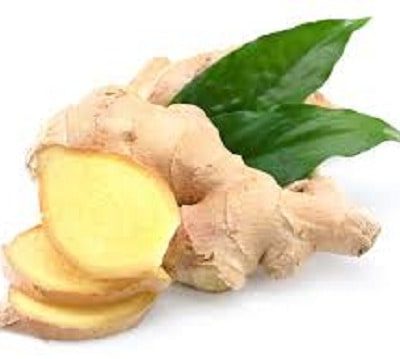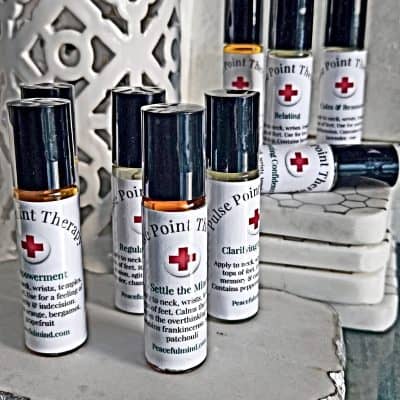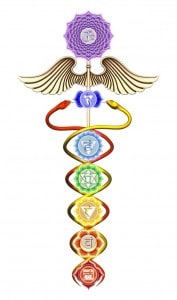 Menopause
Menopause
See also acupuncture, anxiety, pain management, stress
Our lives are filled with transitions. From birth to death, women tend to go through a major transition cycle every seven years, with men it is every eight years. So looking at our lives in cycles helps us to map out in our mind or better understand our transitions and how to approach them. For women,the seventh cycle in her life is related to menopause. Menopause is the progression and natural change a women’s body goes through when she is reaching the end of her child-bearing cycle. This change signals a decrease in the production of estrogen and progesterone in the ovaries. Often, women are aware that they are nearing menopause once their menstrual periods start changing. The cessation of the menstrual cycle for a period of one full year is considered the medical diagnosis of menopause. There is menopause that occurs naturally and there is also menopause that may be induced by surgery. This medical “diagnosis” is not considered a disease but simply an upgrade from reproductive to non-reproductive years. It is simply a name given to this passing phase. This reduction in ovary function, follicles, hormonal changes and blood circulation does not happen overnight. This process or change often takes place over a span of 3-6 years prior to a diagnosis of menopause. This is considered peri-menopause.
Although the median age for women reaching menopause is age 50, worldwide, remaining unchanged for centuries, variations in this process occur based on constitutional factors and lifestyle. Constitutional factors are considered situations we are born out of based on family traits, genes and heredity. Lifestyle factors include situations that occur during our lifetime based on our choices, such as smoking, chemical dependency, obesity, type 2 diabetes and dietary choices. Of course it is never just one factor that is an indicator of this change, but a host of factors accumulating over a lifetime. The severity of problems or symptoms, which can occur during peri-menopause or menopause, are the culmination of several factors brought together over time. For some women, no outward physiological symptoms are experienced. But on the other hand, many women will experience one or several of such symptoms as hot flashes, sweating, vaginal dryness, headaches, irritability, insomnia, anxiety, depression, fatigue or lack of concentration.
A Look At Hormones
Progesterone and estrogen hormone levels are the driving force during the reproductive years. These hormones then start fluctuating during menopause. Estrogen is the dominant hormone during the 3rd-13th day of the cycle. Progesterone is the dominant hormone in the 14th-28th day of the cycle. During the onset of menopause, a woman’s body will not produce sufficient amounts of estrogen and progesterone during the cycle, which causes symptoms of menopause.
The endocrine system is the least understood of the body’s physiological processes. When the brain is called the greatest sex organ in the body it is for good reason. The master controller of all processes is the pituitary-hypothalamus-axis. This is the cross roads of a complex series of feedback interactions and influences within the hypothalamus, the pituitary gland and the adrenal glands. The ovaries are the main source of estrogen during the reproductive years. This form of estrogen is known as estrodiol. During the course of perimenopause, women can begin having less than regular menstruation. Estrogen may be high (dominant) at the beginning of perimenopause or estrogen may cease to produce. This can often explain why women in their 40’s experience symptoms and then the symptoms stop. Indicators of perimenopause can begin manifesting as symptoms such as irregular menstrual cycles, with scanty infrequent bleeding, heavy bleeding and/or clotting or skipped periods. These indicators are the body showing it’s hormonal imbalances. These symptoms can also be indicators of other disorders; therefore the past history can differentiate.
As a great regulator, the pituitary-hypothalamus-axis helps to control hormones. As a woman’s body starts entering here seventh life cycle, the kidneys (her constitution source of life) and better yet, the adrenal glands start producing more of the hormone, androstenedione. This hormone starts converting into an estrogen called estrone. Estrone becomes the dominant estrogen instead of estrodial, after menopause. The conversion of androstenedione to estrone is most prevalent in women due to the amount of adipose (fat) tissue she may have. Therefore, a woman who is overweight to obese will convert a much larger percentage of androstenedione to estrone (between 5-7%) were a thinner woman may only convert a smaller percentage (between 1-2%). Again, this shows how lifestyle can play a major part in how a woman experiences menopause.
Symptoms of Menopause
Woman may not experience any symptoms during this transition or may only have one or more of the following. Many woman, on the other hand can experience:
-hot flashes
-night sweats
-depression
-anxiety
-insomnia
-poor memory
-poor concentration
-vaginal dryness and/or atrophy
During menopause, women are at higher risk for:
-coronary artery disease
-artheriosclerosis
-osteoperosis
-thinning skin
-slow healing
-itching
-vaginal dryness
-atrophy
Hormone Replacement Approach To Menopause
The Western medical paradigm has been treating menopausal symptoms in women with the replacing of hormones or hormone replacement therapy (HRT). From the Western viewpoint, menopausal symptoms are only hot flashes and vaginal dryness; both solely considered an estrogen deficiency problem. Therefore, HRT is considered the cure.
The Women’s Health Initiative (WHI) is a set of studies conducted by the National Institutes of Health, a division of the U.S. Department of Health and Human Services. Through these studies, WHI researchers gathered information about the health of women who have gone through menopause. In the HRT trial, researchers were studying the effects of HRT on the health of postmenopausal women. Researchers were trying to determine whether using HRT affects a woman’s chances of developing breast and colorectal cancers, heart disease and osteoporosis after she has gone through menopause. Two groups of women were involved in the HRT trial. In one group, women who had undergone hysterectomy (surgical removal of the uterus) took either estrogen or a placebo (sugar pill). Women in the other group were also postmenopausal but they had not undergone hysterectomy. These women took either combination HRT (both estrogen and progestin) or a placebo. The specific brand of combination medicine used in this group was Prempro. There are other brands of combination-therapy HRT available, but only Prempro was used in this study.
The HRT trial was scheduled to end in 2005. However, researchers decided to stop the combination-therapy part of the study in 2002 because they could see that the risks associated with combination HRT outweighed the benefits. Specifically, it was found that long-term use (5 years or more) of combination HRT resulted in an increase in a woman’s risk of breast cancer, blood clots, heart attacks and strokes. For each of these problems, the increased risk was about 8 more events per 10,000 women per year, compared to women who did not use HRT.
The European Heart Journal, Europe’s leading cardiology journal, published the largest study to look at the effects of HRT since the Women’s Health Initiative trial was stopped early after finding that HRT increased the risk of women developing a range of conditions including breast cancer and thromboembolism. The research is an observational study of 698,098 healthy Danish women, aged 51-69, who were followed between 1995-2001. It has found that overall there was no increased risk of heart attacks in current users of HRT compared to women who had never taken it.
The results did find that in women (aged 51-54) who were taking HRT during the period of the study, their risk of heart attacks was about a quarter (24%) more than in women who had never taken HRT. In addition, in younger women there was an increasing risk with longer duration of HRT, which was not seen in the older age groups.
The study also found that the type of HRT and the way that the women took it made a difference to the risk of heart attacks. Continuous HRT (a continuous combination of estrogen and progesterone) carried a 35% increased risk of heart attacks compared with women who had never used HRT. But if HRT was taken on a cyclical basis (estrogen, followed by a combination of estrogen and progesterone) there was a tendency for these women to have a reduced risk of heart attacks compared to women who had never used HRT, and this was also seen if a synthetic hormone, tibolone, was used. If the method of taking the estrogen was via a patch or gel on the skin or in the vagina, the risk of heart attack reduced by more than a third (38% and 44% respectively).
The New England Journal of Medicine, in 1995 confirmed the link between estrogen therapy and breast cancer. Also, long-term use of estrogen may increase the risk of ovarian cancer.
The Brigham Multipurpose Arthritis and Muskuloskeletal Disease of Boston analyzed a recent report indicating a possible connection between long-term estrogen use and lupus.
HRT Therapy
HRT therapy is given to regulate a hormone called FSH (follicular stimulating hormone), which, during per/menopause, is running high through the blood stream. This surge in FSH is in response to the decreasing unresponsive follicles during ovulation. HRT therapy increases the estrogen in the body, causing the pituitary to think that ovulation and estrogen production are continuing. The therapy decreases the FSH levels and therefore symptoms of hot flashes and dryness decrease. HRT therapy therefore, “tricks” the pituitary gland into thinking it is getting what it needs, artificially. It appears to the body ovulation and estrogen production are continuing, decreasing FSH levels and therefore, decreases such symptoms as hot flashes, anxiety and dryness. Stopping the estrogen causes the body to revert back to its initial state.
The Western medicine approach to HRT is given in several forms. They can be given in a combination of several estrogens (estradiol, estrone and estriol). They can be given as a conjugated equine estrogen or a synthetic estrogen. Synthetic estrogen is manufactured in laboratories and therefore not easily broken down in the body and because of this, tend to accumulate in the body. Dangerous metabolic changes can occur with synthetic estrogen resulting in increased incidents of high blood pressure, blood clots and fluid retention. Natural estrogens too are manufactured in laboratories, one of the most popular types being equine estrogen, manufactured from the urine of pregnant mares. These are sold under the name of Premarin and Estratab. As this is an extremely potent form of estrogen, it too can create metabolic changes in the liver. This form of estrogen is not recommended for women who are extremely over weight to obese, who currently smoke, have high blood pressure, high cholesterol or varicose veins. The other natural form of estrogen is estradiol sold under the names Estraderm, Emcyt and Estrace. These forms are more easily metabolized by the body and should be taken in the smallest dose possible, taken orally and every other day.
HRT can also be prescribed as a combination of estrogen along with progesterone. It was often given to neutralize such potential carcinogenic effects of the breasts and endometrium. Two classes of progestin are used, which include a progesterone and 17 hydroxyprogesterone combination or synthetic progestins. There has been an ever-growing body of research around replacing progesterone instead of estrogen. Natural progesterone cream is sometime recommended. There are two reasons to be cautious with this protocol. Often creams that say they are natural are actual synthetic ingredients, which make it no safer than synthetic progestins. The other reason is that women start feeling good on progesterone and do not regulate their dosage properly. Adverse effects of improper progesterone use include break through bleeding, changes in cervical erosion and secretion, breast tenderness, weight gain and edema.
Potential adverse effects of HRT:
-endometrial hyperplasia
-cancer
-thromboembolism
-stroke
-hypertension
-breast cancer
-gallbladder dysfunction
-nausea
-vomiting
-headaches
-water retention
HRT Therapy is contraindicated for any woman who ever had:
-breast cancer
-breast lumps of unknown origin
-active liver cancer
-a history of thromboembolism
-hypertension that is untreated
-vaginal bleeding of unknown origin
It is crucial to analyze your medical history. Women with a history of breast, uterine or ovarian cancer, fibroid tumors, breast cyst that have been diagnosed as atypical hyperplasia, or have liver or gallbladder disease, should not take estrogen replacement therapy.
In conclusion, HRT not only failed to provide the heart and bone health benefits promised, the research showed that these synthetic hormones would promote breast, ovarian and uterine cancer, as well as, cause blood clots, stroke and high blood pressure.
Estrogen therapy alone was shown to increase risk of endometrial cancer if not taken with progestin in woman with a uterus. It also increases the risk of stroke, developing gallstones and urinary incontinence.
Progestin therapy alone such as medroxy-progesterone, was shown not to relieve vaginal dryness and may increase the risk of atherosclerosis as well as negative effects on cholesterol. The effects such as coronary artery disease, stroke, breast cancer, blood clots and breast cancer are yet unknown. However, micronized progesterone appears to have fewer side effects and may not adversely affect cholesterol.
Combination Therapy
Combination therapy (estrogen plus progestin) was shown to increase the risk of coronary artery disease, stroke, breast cancer blood clots dementia and urinary incontinence.
There are other drugs that have been recommended to woman for treating symptoms of per-menopause and menopausal symptoms. Selective Estrogen Receptor Modulators (SERMs) function like estrogen in certain parts of the body and as an anti-estrogen in other areas. The drug Raloxifene, has been given to prevent and treat osteoporosis. Like estrogen, it helps with bone loss. Recently, it has shown to decrease the risk of breast cancer in postmenopausal women. However, it has been shown to increase the risk of blood clots, increase hot flashes in 1 out of 10 women and can cause leg cramps.
Selective Serotonin Reuptake Inhibitors (SSRIs) such as Fluoxetine, Sertraline, and Paroxetine have been prescribed to relieve anxiety, depression irritability and insomnia with an “a side” for relieving hot flashes. Depending on the drug, these SSRIs can cause such side effects as sexual dysfunction, nausea, diarrhea, weight loss (short term use), weight gain (long term use), dry mouth, mental confusion, and can have effects on blood pressure.
Statins (lipid lowering drugs) are sometimes prescribed for preventing atheroslerosis and coronary artery disease. The side effects of these drugs include constipation, loose stool, abdominal pain, nausea, bloating, rash, muscle weakness, muscle inflammation, increased levels of liver enzymes and fatigue.
Antihypertensive drugs (used to treat high blood pressure), such as the drug Clonidine, have also been given to lessen hot flashes. But again, caution should be used as they can cause drowsiness, dry mouth and fatigue, abnormally slow heart rate, rebound high blood pressure when the drug is withdrawn as well as sexual dysfunction.
Testosterone (used in combination with estrogen) has been given to increase sex drive in women. It does prevent osteoporosis and may improve mood, yet it decreases HDL cholesterol (the good cholesterol) as well as having some “masculating” effects such as lowering the voice and facial hair growth. They also increase the risk of liver problems including liver cancer.
The Controversy Around Bio-Identical Hormones
Bioidentical hormones are supposedly chemically identical to those made by the human body and are often described as “natural.” Many of those available today are custom-mixed or “compounded,” in compound pharmacies. The term “bioidentical” is more of a marketing term than a medical one. Different groups define the term differently.
The FDA has warned seven pharmacies that sell these compounded “bioidentical” hormones against making misleading claims about safety and efficacy of their products. The FDA stated that the compounded products were no safer than conventional forms of hormone replacement therapy (HRT). Premarin and most other FDA-approved hormone therapy contain synthetic hormones. Misleading claims by some pharmacies were made about their compounded hormones stating that they could prevent or treat such diseases as Alzheimer’s, stroke, and some cancers, and yet could not show any credible evidence to supports those claims. However, the agency stopped short of prohibiting the pharmacies from filling doctors’ prescriptions for these products.
Wyeth, the manufacturer of Premarin and Prempro, petitioned the FDA in 2005 to restrict the availability of compounded “bio-identical” hormones. According to the Wall Street Journal, sales of Premarin and Prempro have dropped by about half since 2002 when two big government-sponsored studies from the The Women’s Health Initiative (WHI) found that the drugs raised the risks of breast cancer, stroke, and heart attack.
Several FDA-approved bioidentical hormone products are available by prescription and are federally regulated and tested for purity, potency, efficacy, and safety, including 17-beta-estradiol (Estrace, Climara), estrone (Ortho-Est, Ogen), and micronized progesterone (Prometrium, Prochieve 4%). The term is used mainly for hormones made from a prescription by one of these compounding pharmacists, such as Triest (estriol, estradiol, and estrone), or Biest (estriol and estradiol), which are not approved by the FDA.
The North American Menopause Society and the American College of Obstetricians and Gynecologists have raised concerns about the bioidentical hormones dispensed by compounding pharmacies. Both groups have questioned whether the hormones have been adequately tested and maintain that there is no evidence showing that compounded hormones are better or safer than the pharmaceutical drugs. In fact, they have the same risks as synthetic hormones like Premarin and Prempro, but better side effect panels.
I feel the bioidentical controversy will go on and on primarily because advertising and marketing agency have now latched on to a marketing concept and are truly running with it. I do not condone this practice while advocating false hope and false claims. Antidotal evidence is important as it can lead to an accumulative base of knowledge that can encourage more studies to be done. The fact that advertisers and companies are stating claims that are misleading to the public, just demoralizes the entire industry and undermines the foundation and direction in which these therapies need to go.
This is where a safer alternative for bio-identical formulas comes in. An herb or herbal combination are not hormones, but work as a precursor, which in turn, stimulates your body’s own metabolism, works in conjunction with endocrine system’s mechanism of action in order to bring your own system back into balance.
The Holistic Approach In Treating Menopause
The Eastern approach to treating menopause as a holistic therapy is connecting the relationship between the mental, emotional, physical and spiritual outlook. The Eastern medicine paradigm treats the whole person, as the belief is that nothing works independent of each other, but in conjunction with one another. This paradigm also sees symptoms as a differential factor. As an example; hot flashes and night sweats are one diagnosis where as, hot flashes, night sweats with cold hands and feet is a completely different diagnosis. The Eastern approach also looks at lifestyle concerns, environmental issues and diet, nutritional choices and exercise as a complete effort in treating menopause.
With this said, a holistic approach must have a course of action. A holistic therapy needs to address all of the above aspects (mental, emotional, physical and spiritual) in order to be whole. I have many women come into my practice to tell me how they have begun dabbling in alternative medicine for their situation. I do think it is wonderful that more and more patients are becoming empowered and willing to take responsibility for their health and health care. What I would love to see more of is addressing all aspects of their whole selves.
Case Study
I had a new patient come to me for hot flashes that are worse in the morning, with fatigue, loose stool and frequent urination. Her stress levels were extremely high and she was constantly complaining about gas and bloating. Her solution was to take Vitex (chasteberry) to address hot flashes and DHEA, because she read somewhere this could help. She was taking an over the counter remedy for her loose stool and a prescription from her doctor for the frequent urination. She did nothing to address her stress levels and was eating whatever she wanted because she was so stressed and called herself an emotional eater. This was her holistic approach.
Unfortunately, not only was she taking an inappropriate combination of medications and herbal supplements, she was not taking the correct doses. She was not addressing the root of her problem (menopause agitated by stress) and was sabotaging herself with what she was putting in her mouth. She was simply addressing symptoms, which is no better than a Western approach. Of course, symptoms must be addressed, but the root of the problem will continue to remain and rebound back into her life the minute her remedies for the symptoms wear off. By reaching down to the root of the problem and rebuilding and fortifying the foundation, she can effectively resolve so much more of her imbalances.
A holistic course of action takes into account the mental, emotional, physical and spiritual balance achieved throughout life. It is the accumulation of the whole based on our constitutional health (what we are born with/into) and the lifestyles choices we make during our stay here. Following a holistic lifestyle should be one of continuous education, exploration and self-discovery. So many, many people give their lives and bodies away to the trust of advertisers, doctors, friends and family members.
Learn to listen to your body and your intuition. Trust your body, as it will do its best to take care of itself. And when it does not, a health professional is a good place to get an idea as to what is happening. But, no matter who you see for your health, I encourage you to get a second and even third opinion. All health care professionals will give you is their opinion, based on their expertise, signs, symptoms, physical findings or tests. Again, I stress the word opinion, as this is exactly what it is. An opinion is based on a culmination of information originating from everything including hearsay to practical means. Some practitioner’s scope is broad and far reaching. While other practitioner’s scope of practice is not so amassed or open. Regardless, listen and learn. The more responsibility you take for your health the greater your knowledge grows. This goes for what you read in books and on the Internet as well. Everyone with an opinion has a belief or set of beliefs that formulate that opinion. Sometimes, the formulation of these beliefs into an opinion may not always be the most altruistic. Discern information you receive carefully. Crosscheck this information and do more research before giving yourself and your body over freely. Formulate your opinion or belief system based on your own research as well. Be a well-informed patient, first.
A holistic course of action for peri-menopause and menopause needs to address the change in the body’s physical characteristics. The mental and emotional side of menopause is often an even larger hurdle to overcome, as our attitudes and beliefs create our mind/body structure. Elements that are seldom looked at during this seventh cycle of life include sleep patterns, bowel movements, urination, digestion and the assimilation of food in the body, body temperature in general, body temperature in specific areas, movement and exercise, food choices, situations that bring us stress and joy and mental attitudes that contribute to our spiritual growth.
Managing Lifestyle
Lifestyle factors include situations that occur during our lifetime based on our choices, such as smoking, chemical dependency, obesity, type 2 diabetes and dietary choices (see below). Of course it is never just one factor that is an indicator of this change, but a host of factors accumulating over a lifetime. Many times, the symptoms from the aging process are confused with symptoms of peri/menopause. In general, symptoms associated with the aging process include weight gain; change in sleep patterns, hearing loss, a rise in blood pressure and/or cholesterol. These changes are often confused as a direct result of peri/menopause. Often, by changing some lifestyle choices these symptoms of aging lessen or disappear all together. Regardless, if symptoms are due to peri/menopause lifestyle/aging problems, the solutions can affect both outcomes.
1. Not smoking has a direct correlation to hot flashes, so by quitting smoking you can relieve hot flashes.
2. Weight gain increases body fat, which in turn affects hormone levels. By reducing the number of calories per day to 1200, a decrease in weight will occur. Belly fat has been shown to alter hormone levels.
3. Exercise, like working, eating, sleeping… must be scheduled into your day in order for you to do it! You know when to go to work, you know when to eat, and you must know when to exercise. The best way to do this is to make it apart of your day. Increasing your exercise to 4 days will have additional benefits such as lowering cholesterol and burning more calories. In addition, weight bearing exercises (walking, weight training, jogging) help increase bone density. Exercise regulates hot flashes.
4. Kegel exercises can and should be done several times daily to keep the pelvic floor tight and strong. These are wonderful exercises for bladder control due to shrinkage of urethral and vaginal membranes, which can cause incontinence. Right where you are now, start squeezing the anal sphincter and lower pelvic wall. Squeeze, hold, relax. Repeat this 10 times. Then repeat the entire sequence again. Do this 4-6 times a day.
5. Learn biofeedback. Biofeedback is the innate ability to influence the automatic nervous system through the exertion of will and mind. Chances are you have used biofeedback yourself. You’ve used it if you have ever taken your temperature or stepped on a scale. These devices “feed back” information about your body’s condition. Studies have proven it effective for both tension headaches and migraines. The biofeedback “devices” that you can control are heart rate and blood pressure. This is very important for managing peri/menopause.
6. Vaginal dryness can often be an issue as hormone levels fluctuate. Vaginal lubricants can be helpful. Staying sexually active will increase blood flow to surrounding tissue. A wonderful natural lubricant is a paste made of aloe vera gel and slippery elm powder. Use a tablespoon of pure aloe vera gel and slowly stir in the slippery elm powder to create a consistency of toothpaste. Insert a teaspoon of this paste inside the vagina at night to relive dryness. Vaginal itching can be addressed by applying a non-fragrant vitamin E cream or by opening up a vitamin E capsule and applying the oil directly.
7. Treating A Hot Flash is probably the number one issue with the change from reproductive to the non-reproductive years. Nutritional recommendations must be followed (see below). Getting long-term stress issues under control has shown to be extremely important. Regulating the body’s cooling mechanism through regular exercise is imperative.
8. Stress plays a major role in all biological and physiological functions. Exercise, meditation, yoga, relaxation techniques, massage, acupuncture, guided imagery are just a few therapies that can all help to relieve depression, anxiety, irritability, mental forgetfulness, fuzziness, over thinking and fatigue. Stress puts a great deal of burden on the adrenal glands, which, in turn, causes them to work harder. This decreases the amount of hormones needed to help reduce the effects of declining estrogen needed by the body. Do this progressive relaxation technique. Use your hands. Both self-massage and acupressure can help.
9. Trigger point therapy. Probably one of my best remedies for tension, as this can be done with a tennis ball while laying on a hard floor. Follow my treatment for trigger point therapy here.
10. Eat something. Food as medicine has been used for centuries to treat a wide variety of disorders. Used for prevention as well as treating symptoms, the healing power of food and herbs has been documented for centuries. Eating food rich in plant estrogens (phytoestrogens) can be helpful for many women. A plant-based diet rich in phytoestrogens has been shown to decrease symptoms of hot flashes and night sweats. Phytoestrogens are naturally occurring, non-steroidal plants.
Nutritional Advise
Food as medicine has been used for centuries to treat a wide variety of disorders. Used for prevention as well as treating symptoms, the healing power of food and herbs has been documented for centuries. Eating a healthy diet, maintaining a healthy weight, exercising regularly and quitting smoking if you smoke, can help protect against heart disease, osteoporosis and some types of cancer.
The two most important key factors that any woman could do to balance her hormones is to eat a heart-healthy, low glycemic, low fat foods, and incorporate regular exercise into your life. This helps to reduce insulin resistance, one of the main factors in an-ovulation and hormone imbalance.
Eating food rich in plant estrogens (phytoestrogens) can be helpful for many women. A plant-based diet rich in phytoestrogens has been shown to decrease symptoms of hot flashes and night sweats. Phytoestrogens are naturally occurring, non-steroidal plants. They are sometimes referred to as dietary estrogens as they are plant based foods with a similar chemical structure to estradiol. As they mildly mimic or sometimes act as antagonists to estrogen. These would include:
-black current seed oil
-dates
-flaxseed (crushed)
-pomegranates
-primrose oil
-miso
-soy milk
-soy beans
-tempeh
-tofu
Get enough fiber. Help yourself to foods high in fiber, such as whole-grain breads, cereals, pasta, rice, fresh fruits, and vegetables. Most adult women should get about 21 grams of fiber a day.
In addition to soy and tofu products, women can help combat hot flashes by eating more calcium-rich foods, magnesium-rich foods and foods rich in vitamin E — like cold-pressed oils, green leafy vegetables, nuts and almonds, as well as plenty of mineral- and fiber-rich foods, like whole grains and fresh vegetables.
Vitamin E, emulsified, mixed tocopherols, (400 – 800 iu) daily can reduce hot flashes, assist in lubrication, tissue repair and improves circulation.
Vitamin B complex (mixed B’s) assist in improving circulation and cellular function, improving adrenal function, minimizing water retention and maintains the health of nerves, hair, skin, eyes, liver and gastrointestinal functions.
Lecithin granules (1 tbs 3 times daily before meals) or capsules (1200 mg 3 times daily) before meals, acts as an important emulsifier for Vitamin E to help reduce hot flashes.
Supplements as 1500 mg of calcium and 400 mg of Vitamin D in divided doses, will not only help with sleep but will increase bone density as well.
Women’s Synbiotic Nutrients delivers 25 different vitamins and minerals in their most easily digested and efficacious form whole fermented foods. The therapeutic value of the formula is enhanced by the action of superfood extracts and 20 stress-balancing and free-radical scavenging herbs fermented for maximum effectiveness. These blends or responses were expertly formulated to support the unique needs of women. This supplement offers the hormonal support of vitex and the energizing action of maca, along with digestive and liver support from artichoke. Nettle leaf provides an alkalizing source of minerals.
Super Omega Fish Oil is an amazing hormone regulator! OMEGA-3 fatty acids, help prevent aging skin, menopausal symptoms, promote better circulation, lower cholesterol, prevent blood clots, reduce heart related risk, and the pain of arthritis.
Water should be a very important part of any nutritional program. 6-8 8 ounces per day. Water allows for the cleansing, thinning and free flow of mucus in the system. Dehydration is often a trigger of symptoms.
Foods to Avoid
Certain foods may trigger hot flashes. Dairy products and meat products are foods that can irritate the heat mechanism in the body (inflammation) triggering and/or aggravating hot flashes. Limit your dairy consumption to low fat yogurt and/or buttermilk.
Other aggravators include sugar, spicy foods, hot beverages, caffeine and alcohol. If you suspect that food is a trigger, do the The Allergy Elimination Diet. Certain foods and food additives such as MSG, citric acid, alcohol, vinegar and marinated foods can be the culprit.
Also look at possible triggers such as chocolate, wheat, sugar, lunch meat such as hot dogs or bologna, dairy products, nuts or fermented foods such as yogurt, cheese or sour cream.
Avoid excess salt intake.
Excessive caffeine can also be a trigger. Throbbing pain cause by blood vessels that have diluted are the result of too much coffee. Caffeine withdrawal can create headaches, so drink coffee in small amounts and taper off gradually.

The Full Spectrum Diet
As a Nationally Certified Herbalist and Licensed practitioner of Acupuncture and Chinese Medicine, Andrew Pacholyk, MS, L.Ac. has spent years developing a natural healthcare plan, which incorporates the benefits of fresh, full spectrum foods based on their color and their properties. A balance of attractive colors in the foods you eat, play an instinctual part as to what the body needs in the moment. The color energy of fruits, vegetables, vitamins and minerals all come into play when furnishing your body with the proper nourishment.
This easy to use system monitors healthy weight by the colors of food on your plate!
The Full Spectrum Diet is based on the proponents of color therapy and the holistic principles of eating mindfully, eating to nourish the body and seeing food in a more natural and spiritual way. Meals rich with different colored fruits, vegetables, meat, chicken, fish and whole grains means you are getting a healthy variety of nutrients that your body needs.
It is a simple way to eat healthy in order to achieve healthy results! Want to know more?
Homeopathy
This medical system uses infinitesimal doses of natural substances to stimulate a person’s immune system and body’s natural defenses. Homeopathic remedies are named for the plant or animal ingredients they are made from. Homeopathy not only offers relief from temporary disorders but, can provide long term healing of a person due to its individual and “holistic” approach. This type of healing makes it easier and possible to avoid recurrence or relapses in the future and homeopathy stimulates the body’s natural defense system by reestablishing normal immune system and cell functioning.
Peri/Menopause:
Lachesis: Lachesis is an important remedy during the menopause, and is often called for in women who have never felt well since the onset of menopause. Hemorrhages,fainting, weakness, melancholy periods every twenty-one days, periods profuse, generally worse before menses, and pains and mood better once the flow starts Hot flushes, with headaches, palpitations and hot sweats Headaches, especially in the vertex, with burning sensations. Some nausea, diarrhea or haemorrhoids
Sepia: Sepia is mainly a female remedy. It is know as the ‘washer-woman’s remedy’, because people who need this remedy are worn down, exhausted, weepy, weak perspire profusely, need air Must sit down and cross their legs, as they feel their insides will fall out. Are so worn out they can appear indifferent to their loved ones, They have a sharp tongue, and almost take pleasure from hurting loved ones. This is not because they don’t love their family; it’s because they are just worn out and exhausted and have nothing more to give to anyone.
Sulphuric Acid: This is another very useful remedy during menopause. Like all the acids, weakness and debility are common to this remedy, especially in the digestive tract, giving a very relaxed feeling to the stomach, and a craving for stimulants. They feel a weakness out of all proportion to the problem. It affects the blood and blood vessels, causing hemorrhages of thin, black blood. Other symptoms of this remedy are prolapse of vagina and uterus from weakness, flushes of heat, followed by sweating and a trembling all over, irritability, weepiness over the slightest thing. They can have nightmares before or after periods. They must do everything in a hurry. They get angry and impatient because things move so slowly. No one does anything to please them.
Folliculinum: Symptoms between ovulation and menses and for those who have taken the Pill in the past, or their mothers had taken the Pill before they were conceived. This is a very useful remedy for women with hormonal symptoms who may have used the Pill, and also useful for symptoms during the menopause. Folliculinum can help restore the will and re-empower the person. It is generally seen after this remedy that the person takes control of her life again, finds her own identity, becomes her own rescuer and won’t allow herself to be used ever again. It allows people to break the patterns from the past that they find hard to change. It helps to restore clarity.
Calcium Carbonicum: Calcium carbonicum (Calc. carb.) is a very useful remedy during the menopause. The typical Calc. carb. woman is responsible, dutiful and hard-working, ‘a pillar of the community’. She can take on too many responsibilities and become overwhelmed by them. Mentally, she can be tired and unable to hold onto thoughts or details, and then she feels that she is going mad and worries that other people will realize it. She has always worried about what others think of her and even more so now. She has a strong focus on security, with lots of anxieties around money and health. When she is ill, she can despair of ever recovering her health.
Pulsatilla: Pulsatilla is a very important remedy for women’s complaints and is often of use during the menopause. The woman needing this remedy is of a gentle, mild disposition. She is emotional and easily moved to laughter or tears. Her moods are changeable; she can cry at every little thing and loves to be comforted. She can also be easily irritated and has a tendency to feel slighted, or be fearful of being slighted. In general, she feels better in the fresh air and feels worse in a warm, stuffy room and in the evenings. Physical problems include irregular menstruation, whether it is too early or too late, too scanty or too profuse. The menses can be painful enough to cause nausea or vomiting, and bending double can help the pains. Unusually, the bleeding can happen during the day only. She can have difficulty sleeping because of hot flushes and anxious thoughts, and her legs can be very restless at night.
“Andrew’s Best Remedies”
-
Sale!

3-Step Weight Loss Solution Kit
Original price was: $ 79.95.$ 75.95Current price is: $ 75.95. -
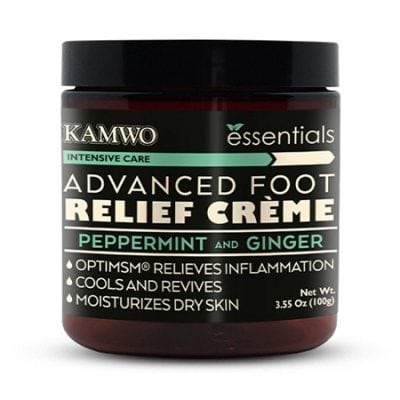
Advanced Foot Relief Cream
$ 28.00 -
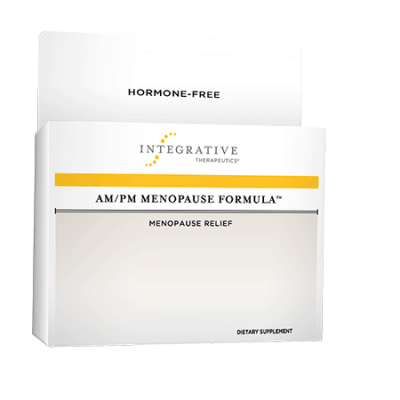
AM/PM Menopause Formula
$ 24.95 -
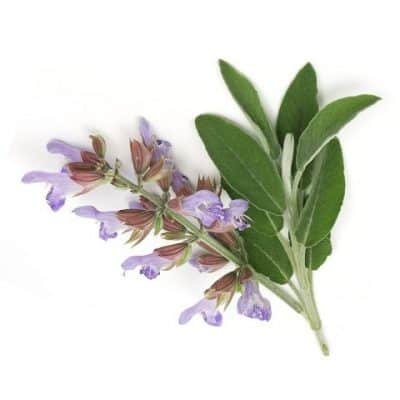
Angel’s Mist Clary Sage Essential Oil
$ 23.00 -
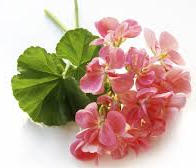
Angel’s Mist Geranium Essential Oil
$ 23.00 -
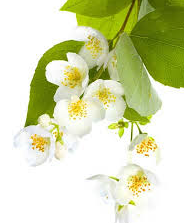
Angel’s Mist Jasmine Absolute Essential Oil
$ 23.00 -
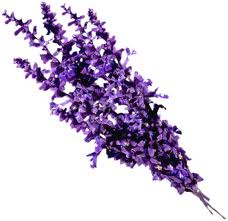
Angel’s Mist Lavender Essential Oil
$ 9.00 -

Angel’s Mist Orange Essential Oil
$ 9.00 -
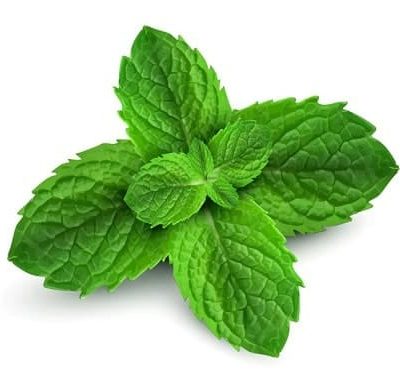
Angel’s Mist Peppermint Essential Oil
$ 9.00 -
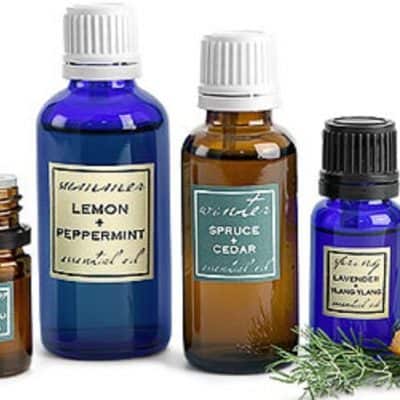
Angel’s Mist Aroma Remedy Blends
$ 19.95 -
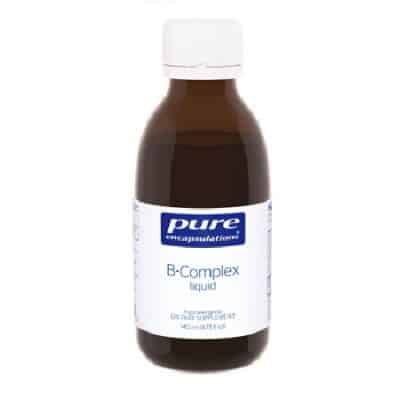
B-Complex Liquid
$ 29.95 -

Calcium-Magnesium
$ 29.95 -

Digestive Enzymes Ultra
$ 38.00 -
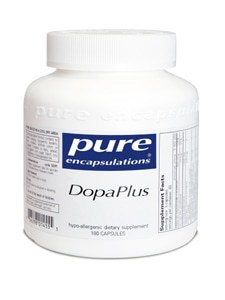
DopaPlus Mood Support
$ 44.95 -
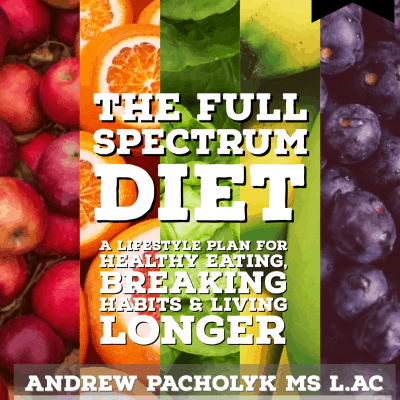
Full Spectrum Diet and Kit
$ 39.95 -
Sale!
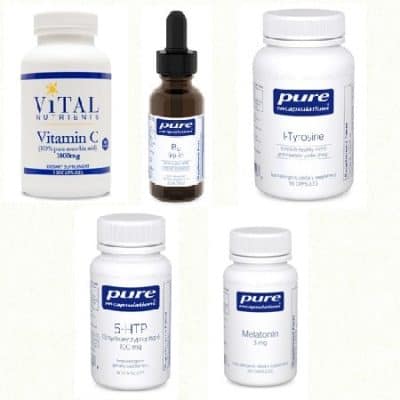
Happiness Supplement Pack for SAD
Original price was: $ 88.00.$ 79.95Current price is: $ 79.95. -
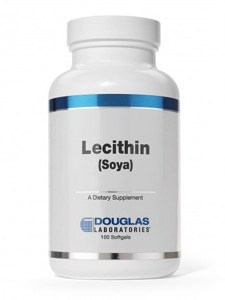
Lecithin 1200 mg 100 gels
$ 15.95 -

MenoYang Formula
$ 110.00 -

MenoYin Formula
$ 110.00 -

MenoYinYang Formula
$ 110.00 -
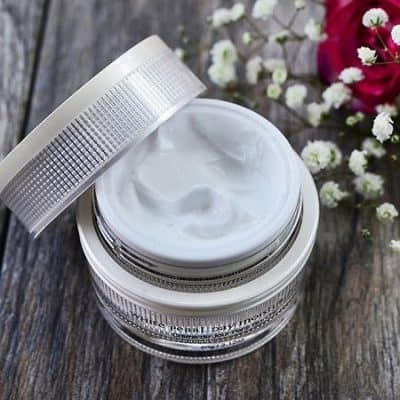
Moisturizing Pearl Cream
$ 26.00 -

Pro-Omega-3 120 Lemon
$ 49.95 -

Pro-Omega-3 60 Lemon
$ 28.00 -
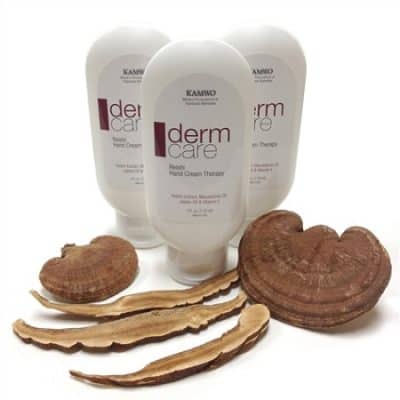
Reishi Hand Cream
$ 29.95 -
Sale!

Stop Smoking Kit
Original price was: $ 49.95.$ 44.95Current price is: $ 44.95. -
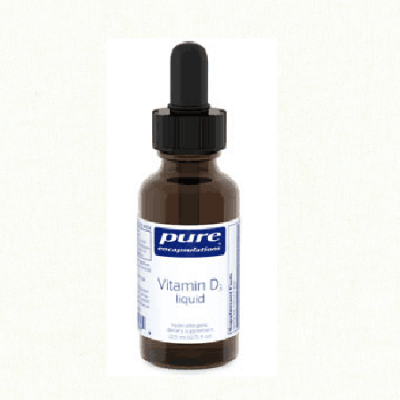
Vitamin D3 Liquid
$ 28.00 -
Sale!
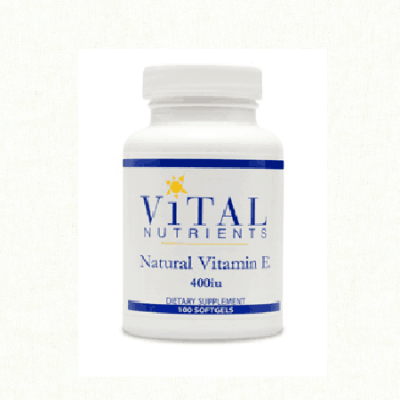
Vitamin E
Original price was: $ 21.95.$ 19.95Current price is: $ 19.95. -
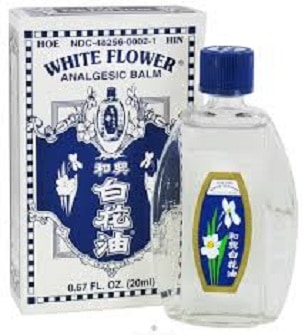
White Flower Oil
$ 14.95 -
Sale!
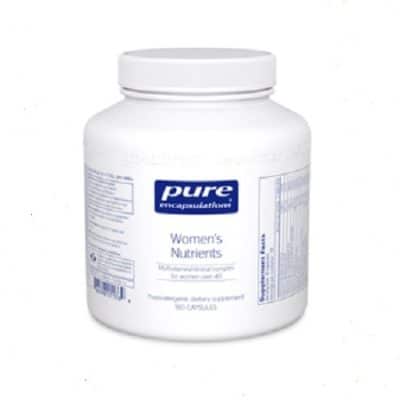
Women’s Nutrients Multi-Vitamin
Original price was: $ 79.95.$ 69.95Current price is: $ 69.95.
Herbal Remedies
Herbs such as black cohosh, blessed thistle, dong quai, fennel, red raspberry leaf, sarsaparilla, squaw vine, false unicorn root, and wild yam root are natural estrogen (precursors) promoters. Gotu kola and donq guai can be used to relieve hot flashes, depression and vaginal dryness. These herbs are best balanced in Eastern herbal formulas that are specific to particular patterns (group of symptoms). (See Traditional Chinese Medicine below).
Black cohosh (known as both Actaea racemosa and Cimicifuga racemosa), is used for hot flashes and other menopausal symptoms.In 2001, the American College of Obstetricians and Gynecologists stated, primarily on the basis of consensus and expert opinion, that black cohosh may be helpful in the short term (6 months or less) for women with vasomotor symptoms of menopause. Extracts of black cohosh are standardized to 26-deoxyactein, a member of a group of chemicals known as saponins. Black cohosh contains plant-based estrogens, also called phytoestrogens, that can mimic the estrogen found in the human body. Regularly taking black cohosh can alleviate cramping, hot flashes, vaginal dryness and emotional distress, and reduce levels of luteinizing hormone secreted by the pituitary gland, which triggers ovulation.
Dong quai is renowned among Chinese herbalists for its beneficial effects on the female body. The herb has estrogenic properties that can help relieve many menopause symptoms, such as hot flashes and vaginal dryness. In Chinese medicine, dong quai is considered to be warming to the body, giving new vitality to women suffering from menopause-induced fatigue.
False unicorn root (Chamaelirium luteum), is a Native American herb. False unicorn root is used to treat medical concerns, include decreasing estrogen and progesterone levels , easing digestive woes, treating infections of the uterus, eliminating ovarian cysts, and treating endometriosis.
Fennel tincture, seeds and oil are used as an estrogen pre-cursor source to regulate menstruation, and relieve discomforts of menopause. Fennel was traditionally known as the slimming herb as it has a stimulating effect on the metabolism. The herb increases gastric secretions, which has a beneficial action on digestion, and helps to regulate intestinal flora.
Red raspberry leaf (Rubus idaeus) is a wonderful uterine tonic often used for women suffering from menopause symptoms especially when there is spotting for no apparent reason. When used regularly, red raspberry leaf will tone smooth muscle tissue, helping to ease cramps and discomfort. It also helps to regulating cycles during perimenopause.
Sarsaparilla (Smilax officinalis) has a progesterogenic action meaning that the herb can be used to bring relief to women suffering from symptoms of menopause as well as other menstrual issues,such as premenstrual syndrome. In certain cases where menopause is associated with debility and depression sarsaparilla can be very useful. As a matter of fact, Native Amazonian people have been known to take sarsaparilla to improve their virility and to treat problems associated with menopause.
Wild yam root (Dioscorea villosa) is a natural approach that helps women at menopause relieve hormone imbalance. It can prevent and halt mid-cycle bleeding by contributing as a precursor to progesterone production. Wild yam extract is diosgenin, NOT progesterone. Diosgenin is the precursor to progesterone.
___________________
A note on wild yam progesterone creams: creams that contain progesterone but also contain mineral oil will prevent the progesterone from being absorbed into the skin. pharmaceutical companies buy natural progesterone (derived from yams and soybeans), and then chemically alter its molecular form to produce synthetic progestins. This molecular form is not found in nature, but it can be patented and therefore much more profitable.
Most synthetic drugs consistently show that separating the so-called active ingredient from the rest of the plant to create other substances not found in nature almost always creates harmful side effects. Science has not been able to duplicate efficiently in synthetic drugs what natural substances can do.
Progestins are less safe for women because of its side effects and health consequences!
Herbal Combinations and Formulas
Herbal tinctures are concentrated liquid extracts of the medicinal properties of herbs. Tinctures represent one of many different ways to prepare and use herbs. The terms tincture and extract are often used interchangeably.
Shake the tincture bottle well. As a dietary supplement, place 1 to 3 droppers (under the tongue, or in juice or water as needed, 2-3 times a day.
Circulation Support: Hawthorn berries, Ginger, Angelica, Bayberry Bark, Hyssop, Prickley Ash bark, Cloves, Cayenne.
Menopause Support: Wild Yam, Kelp, Chaste Tree, Motherwort, Blue Cohosh, Dong Quai, Red Raspberry, Damiana, Licorice.
Mensamends: False Unicorn, Dong Quai, Damiana, Red Raspberry, Blessed Thistle, Fo-Ti..
Mood Support: St. Johns Wort, Chamomille, Schizandra, Oatstraw, Avena Sativa.
Night Cap: Valerian, Hops, Scullcap, Passion Flower.
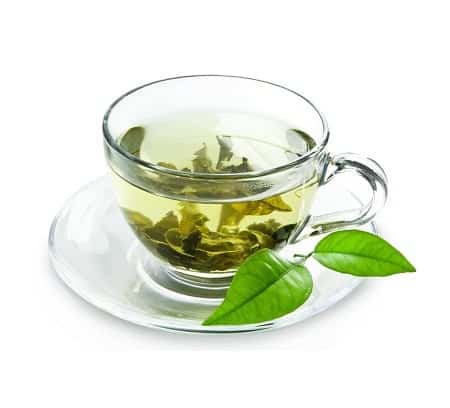
Herbal Teas
In a stainless steel pot, boil desired amount of water. The moment it boils turn the heat off. Add the following herbs in an infuser, muslin bag or tea ball for a single cup or add one-three teaspoons of herbs per cup for larger amounts.
Allow the herbs to infuse for up to 5 minutes. Drink 3-4 cups a day. For flavor-add lemon and sweeten with Stevia or organic honey. These herbs are helpful for gently cleanses, purifying, detoxing, anti-inflammatory. This powerful formula will help remove accumulated toxins in the body. Strong antioxidant, cleanses the colon and stimulates circulation.
Female Balance Tea– Refreshing tea for PMS symptoms, menopausal symptoms such as hot flashes. Helps restore balance to hormones, estrogen and nourish the female system! Builds the reproductive system. Dong Quai, Black Cohosh Root
Heart Tea– For those who like to keep their heart strong. Dilates the coronary blood vessels, helps lower cholesterol, and restores the heart muscle. Reduces high blood pressure. Also good for bacterial infections, bladder, kidney, and prostate disorders. Hawthorn Berry, Ginkgo Biloba, Gymnema Herb.
Calm Tea– Relaxing blend of herbs to help reduce stress and helps you to unwind. Improves circulation and acts as a sedative. Reduces mucous from colds, muscle and menstrual cramps and helps with anxiety and stress. Chamomile Flower, Peppermint Leaf, Catnip Leaf, Strawberry Leaf, Linden Leaf and Flowers, Passion Flower Herb, Scullcap, Licorice Root, Valerian Root.
SleepyTea– Soothing blend of herbs for relaxing moments or right before bed. Helps in relieving stress and anxiety, indigestion, and insomnia. Valerian Root, Chamomile Flowers.
Exercise
Exercise like work, eating, and sleeping must be scheduled into your day in order for you to do it! You know when to go to work, you know when to eat, and you must know when to exercise. The best way to do this is to make it apart of your day. Increasing your exercise to 4 days will have additional benefits such as lowering cholesterol and burning more calories.
In addition, weight bearing exercises (walking, weight training, jogging) help increase bone density.
Exercise regulates hot flashes.
Regular exercise is also an excellent way to stave off weight gain and loss of muscle mass, which are two frequent symptoms of menopause.
Most healthy women should aim for at least 150 minutes of moderate aerobic activity, or 75 minutes of vigorous aerobic activity a week, according to the Centers for Disease Control and Prevention (CDC).
Stay Motivated
1. Cardio-Aerobic activity that makes use of your large muscle groups while keeping up your heart rate is important. Your options for cardio are limitless. Almost any activity counts, as long as it keeps your heart rate up for 20-30 minutes. Consider fast walking, jogging, biking or swimming.
2. Strength training is essential for building bone strength and staving off osteopenia and osteoporosis as bone-thinning occurs with menopause. Strength training exercises will help to build bone and muscle strength, burn body fat, and boost your metabolism.
3. A Yoga and meditation practice or relaxation technique that works for you, can be extremely beneficial. Whether it’s deep breathing, yoga, or meditation, having a practice in your life like this, can help you cope with not only menopause, but with life in general. As no two women experience menopause in the same way, your unique symptoms will tailor your approach to relief.
Aromatherapy Remedies
Aromatherapy Several essential oils that contain hormonelike substances related to estrogen are helpful during menopause. Essential oils such as basil, bergamot, clary sage, anise, fennel, cypress, angelica, coriander, sage. Essential oils blends such as peppermint and lemon, will help relieve hot flashes. Geranium, neroli, and lavender balance hormones and also help modify menopausal symptoms. As a rejuvenation cream, geranium, neroli, and lavender oils revitalize a dry complexion, and make a good cream to counter vaginal dryness. With the addition of vitamin E oil, this cream can improve the strength and flexibility of the vaginal lining while quickly healing abrasions that may occur during intercourse when the lining is too dry. Bergamot: oil calms the nervous system and promotes nerve health. It is helpful with depression, mood swings such as emotional ups and downs.
Basil has been shown to increase estrogen levels as well as improve mood. Basil can be helpful against hot flashes when diluted in a carrier oil and applied to your feet or rubbed across the back of your neck.
Clary Sage: is very useful for alleviating hot flashes and night sweats.
Geranium: eases the negative feelings and helps to promote feelings of intimacy. This is a soothing oil that can restore balance, stability and stability.
Jasmine: is a soothing flower that helps to reduce anxiety, calm emotional upset, and regulate mood swings.
Lavender: Massage this soothing oil directly into the temples, jaw line and back of neck for soothing relief from a tension and headaches. Lavender relieves muscle spasms and pain as it reduces inflammation. One of the best multipurpose oils for treating anxiety, mood swings, and insomnia.
Lemon: is an uplifting and citrus solution for stopping hot flashes, encourages circulation and clears the head.
Peppermint: clears sinuses and improves breathing. Massage this oil (preferably in a carrier oil) into the temples, sinuses, nape of the neck and jaw line. Gently inhale this remedy to stimulate blood circulation and create a cooling sensation. This is an excellent oil for relieving hot flashes, especially when it is blended with clary sage and lemon.
Rose: is a soothing scent that stimulates circulation. Rose reduces inflammation and relieves muscle spasms. It calms the nervous system and decreases depression.
Andrew’s Aroma Remedy Blends: ~ 3 times a day, morning, noon and night, utilize these blends of essential oils:
Angel’s Mist Menopause Massage Remedy Blend: affect estrogen and balance hormones.
Angel’s Mist Menopause Rub Remedy Blend: ease hot flashes.
Angel’s Mist Menopause Inhalant Remedy Blend: emotional ups and downs.

Citrus Treatment
Lemon and Orange essential oils are very beneficial for women experiencing symptoms of menopause. Researchers in a 2014 study found that pre and postmenopausal women who inhaled one of these essential oils experienced fewer physical symptoms and an increase in sexual desire.
Citrus essential oils also have anti-inflammatory properties, which may help with any pain you experience.
These oils can decrease systolic blood pressure and can improve pulse rate and estrogen concentrations.
Citrus oils can make your skin sun sensitive. Avoid direct sunlight if applying diluted citrus oils to your skin.
Basil Relief Recipe
Basil essential oil has been shown to increase estrogen levels as well as improve mood. Basil can be helpful against hot flashes when diluted in a carrier oil and applied to your feet or rubbed across the back of your neck.
~ Add 15-20 drops of Basil essential oil to 2 tablespoons of carrier oil such as jojoba, sunflower, safflower, or canola.
~ Massage the oil into your feet, around your belly (especially below the navel) or across the back of the neck.
~ This can be done during the symptom of hot flashes or when you are feeling particularly emotional.
Hydrotherapy
The mysterious and amazing healing power of water has been utilized for centuries. Water cleanses, refreshes and restores all life. We are always drawn to water. Be it a soothing fountain or majestic waterfall. Water is a carrier. It flows. It moves along the line of least resistance to find its way to the ocean where comes and goes in the ebb and flow of tides and waves. The appeal is inexplicable! We crave water, maybe because our bodies are made up of a large percent of it. Maybe because we instinctively know how it can heal us.
Hydrotherapy is the use of water in any form, in the treatment of dis-ease.
Contrasting bath of hot then cold water is a great treatment for menopausal symptoms. Taking a contrasting shower is even better. Make sure you end with cold water! Pay attention to under the arms, top of the head, mid back and vaginal region.
For a relaxing bath, as the tub fills with water add 2 spoons of Angel’s Mist Deep Soak Sea Salts to the bath water for a soothing, tension relieving soak. Submerging as much of your body as possible, stay in the bath for at least 20 minutes, adding water as needed to maintain the temperature of the bath. End with a cool to cold shower.
An ice pack on the back of the neck, temples, top of the head, pulse points and between the shoulder blades can relieve a hot flash. Relax on to an ice pack for about 15-20 minutes. Repeat if necessary.
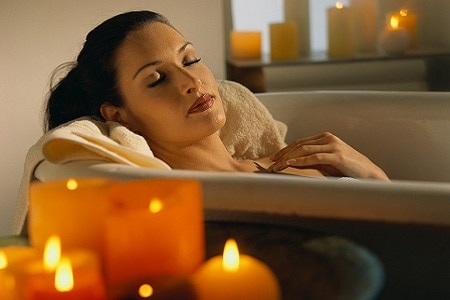
Creating A “Time Out” Bath
When the world is just too much and you need a respite from your husband, the kids, your phone or email… now is the time to unplug and unwind. Create your own sacred sanctuary by make a special bath just for you.
Try This bath:
Start with your props… consider some soothing aromatherapy candles, meditation music, or perhaps some crystals.
1 tablespoon baking soda
1 cup apple cider vinegar
15 drops of tea tree oil
11 drops of lavender oil
5 drops of basil
Mix ingredients and add to lukewarm running water. Relax in the bath for 15-20 minutes. At the end of your bath, run cooling water into the tub. Rinse off, dry off, and clean your tube!
Traditional Chinese Medicine
Traditional Chinese Medicine (TCM) is the oldest, continually practiced, and professionally administered health care system in the world. It is a documented medical system spanning over 2,500 years based on comprehensive philosophies, rational theories, clinically tested and empirically verified by over 100 generations of highly educated practitioners.
Chinese Medicine is a total system of internal medicine, which is comprised of a diagnostic procedure based on signs, symptoms and treatment styles including acupuncture, herbal medicine, exercise, diet and meditation. It’s foundation is based on the principles of balance; the interdependent relationship of Yin and Yang. Through this balance, health is achieved and maintained. Traditional Chinese Medicine looks at any disease through a signs and symptoms and then groups them into certain patterns.
Acupuncture and herbal medicine are effective therapies for the treatment of peri/menopause. Acupuncture redirects your energy (Qi) into a more balanced flow. It provides support to the underlying energetic spheres affected by menopause and the pituitary-hypothalamus-axis.
Alternative to Bio-Identicals
“This is where a safer alternative for bio-identical formulas comes in. An herb or herbal combination are not hormones, but work as a precursor, which in turn, stimulates your body’s own metabolism, works in conjunction with endocrine system’s mechanism of action in order to bring your own system back into balance”.
I treat hundreds of woman for perimenopause and menopausal issues. 85% of these woman fall into one of the three categories below. There are often additional issues that need to be addressed in a private treatment, but for the most part the herbal formulas I have created for these indications have helped the vast majority of my patients throughout the years.
A Differential Diagnosis of Symptoms
The Eastern approach to treating any disorder is by treating the root of the problem. Branch treatments (treating just the symptoms one sees) are the equivalent to putting a band-aid on a broken bone. Treating perimenopause and menopause requires an in depth look at signs and symptoms, past medical history, family medical history and every symptom or sign, even if it does not seem related to the current problem.
When differentiating such symptoms, it is important to realize which are the most dominant set of symptoms and which are secondary. Not everyone would have all symptoms in one category. They may have a few in one category and a few in another. The more dominant or most symptoms from one category is usually the predominant deficiency. Once you can identify the more predominant deficiency then it is easier to pinpoint remedy-specific formulations to treat and tonify the situation.
Additional underlying patterns that aggravate the above symptoms include Dampness (being overweight, difficulty getting out of bed in the morning, a feeling of heaviness in the body) Vital Energy (Qi) Stagnation (tiredness, fatigue, listless speech) or Blood Stasis (sharp stabbing pains anywhere in the body, poor circulation)
1. Note the three categories below.
2. You do not have to have every symptom listed in one particular group. Choose which group you seem to have the most symptoms under.
3. Choose the appropriate formula that fits your pattern.
TCM and Menopause
Formulations of Eastern Medicinals
The majority of the world’s population since has used herbal treatments as front line medicine before recorded history, and is still the most widely utilized medical system in the world today.
Herbs are the medicinals in holistic medicine. Chinese herbs are specifically used to create decoctions or teas and are a very powerful part of healing dis-ease. Herbal decoctions can also be given in “tea pills”, tinctures, and granules or as an external patch, compress or bath. Chinese herbal medicine uses several hundred substances, mostly of plant origin (roots, seeds, flowers, twigs, crystals, bones and barks). These are hardly ever prescribed singly. They are combined into a formula, which usually contains between 8 and 12 ingredients. It is the “herbal synergy” that seems to be the strength behind Chinese herbal formulas. The exact combination is adjusted to suit the patient’s individual condition, and is likely to be altered as the treatment progresses to take account of changes that have occurred. It is therefore a very flexible system, which can be closely developed to the needs of the patient. Adverse reactions to herbs are extremely rare and are negligible when compared to those commonly produced by pharmaceutical drugs.
| Symptoms | Formula |
| Dizziness, exhaustion, tinnitus, malar flush, night sweats, hot flashes, mental restlessness, heat in palms and feet, sore weak lower back and/or knees, dry mouth, dry throat, dry hair, dry skin, itching, constipation, anxiety, irritability, headaches or cold feet. Premature graying of hair, low sperm count in males, decreased menstrual flow in women, infertility in women or heel pain. The tongue often presents as a red tongue body with little or no coat or peeling coat. The pulse can feel empty or fine, deep or weak. It may also appear to be overflowing or in excess closest to the wrist. |
MenoYin Formula |
| Hot flashes, but cold hands and feet (extremities), night sweating (early morning), pale face, depression, chilliness, backache, edema of the ankles. Pale or dark complexion, listless spirit, an aversion to cold, low sex drive, weak or cold low back, frequent urination or clear and profuse, clear vaginal discharge and/or edema. The tongue is pale tender, sometimes with tooth marks, and a white and/or slippery tongue coat with a fine deep pulse. |
MenoYang Formula |
| Hot flashes, but cold hands and feet, (especially fingers and toes) nightsweats, frequent urination, which tends to look pale, flushing around the neck, when talking, slight agitation, chilliness, dry throat, dizziness, tinnitus, backache, poor memory or vivid dreams and insomnia.. Tongue can be pale or red depends on predominate deficiency. Pulse feels empty or very fine and rapid. |
MenoYinYang Formula |
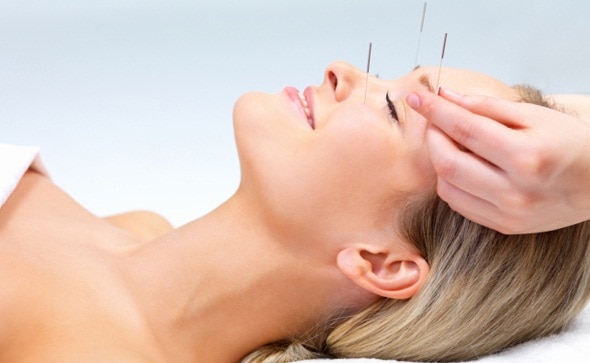
The Mechanism of Menopause
In Eastern medicine the kidneys are looked at as an entire system, not just an anatomical object. The energy of the kidney system encompasses not only the physical traits of regulating blood, waste products and water metabolism, but dominates reproduction growth and development. The kidney system is the producer of marrow (or essence), dominates water metabolism working in conjunction with the urinary bladder and the lungs. The kidney system in Eastern medicine is the dominant force in our life vitality. They share a corresponding emotional connection (fear), tissues (the ears), sensory organ (bones) and element (water). As we age, the energy of the kidneys decline. Since the kidneys are associated with our essence, they are the main organs treated during menopause. Kidney disorders are generally of a cold and or deficient nature. Therefore, tonifying and moistening the kidneys is the primary approach.
The bladder along with the kidneys form an important pair. As they are anatomically connected through the ureters, the bladder not only excretes waste material but also is a temporary receptacle for vital fluid retention and transformation. The bladder functions largely at its optimum when the kidneys are normal, strong and healthy. Therefore, water is metabolized properly and the storage and excretion of waste through the bladder, is related to the general function of the kidneys.
DIY Acupressure Points for Menopause
This is a list of DIY (do it yourself) points you can do, anytime. To use these points, press with firm pressure and hold each point for 1 minute. You can use all of these points, or only some of them, but hold each for a full minute, and many of the menopause symptoms will lessen over time. Press the points on the back of your neck, in the hollows about a finger-width to the right and left of the base of your skull. Hold these points simultaneously for one to three minutes.
KD 1: At the base of the ball of the feet, between the two pads
KD 27: In the hollow below the collarbone next to the breast bone
GB 20: Below the base of the skull, in the hollows 2 to 3 inches apart
LI 4: In the webbing between the thumb and index finger at the highest spot of the muscle when the thumb and index finger are brought close together.
CV 17: On the center of the breast bone, three thumb widths up from the base of the bone.
Yin Tang: Directly between the eyebrows, above the indentation where the bridge of the nose meets the forehead.
GV 20: On the crown of the head in an indentation or “soft spot” between the cranial bones. To find, follow the line from the back of the ears to the top of the head.
Treatments to Add
Acupuncture
Many women find relief from their menopause symptoms through acupuncture. Studies have shown that acupuncture might be a reasonable alternative to hormone therapy for women suffering from hot flashes. Many insurance plans cover acupuncture, among other alternative treatments. Check your coverage before you make an appointment.
Mindful breathing
Mindful deep breathing such as that practiced during yoga and meditation has a proven calming effect on the mind and can ease some menopausal symptoms such as anxiety and hot flashes. As soon as you feel a hot flash coming on, prepare. Begin by inhaling through your nose to the count of four. Hold your breath for seven counts. Then, exhale completely through your mouth to a count of eight. This is one breath. Try to complete this cycle two more times.
Ginseng
Ginseng is an herb used for its therapeutic health benefits for as many as five thousand years by the Chinese, Koreans, and Native Americans. It may be used to treat menopausal symptoms of fatigue, anxiety, and stress because it’s considered a “normalizer” and an “energizer.” You can take ginseng in different forms including tea, powder, and extract.
Emotional Aspect:
There is an emotional aspect to every illness. Often times, it is the emotional thoughts or “excess emotions” that will lead to illness.
The following therapies are utilized for calming the mind, help with stress relief and focuses on our mental powers over any situation. The ability to balance your emotional, mental, physical and spiritual self are exceptional tools on your healing journey. Here are some suggestions:
- The single most important point you can make about change… is not what faces you that’s the problem, it’s how you react to it.
- The mental and emotional side of menopause… is often a larger hurdle to overcome, as our attitudes and beliefs create our mind/body structure.
- It is important to embrace the transition! Learn to recognize strengths you may have overlooked.
- Embrace optimism and reform your old belief system. Honor the new you, which you are transforming into.
- Use this affirmation: I love and approve of myself I see myself and what I do with eyes of love! I am safe.
The Building Blocks of Change
Change is inevitable.
Our lives are made up of the building blocks of change. Change creates the person we must grow to be. Change happens for a reason. That reason is to allow us possibilities we may not have seen in the first place. This can be traumatic or it can be less so.
The single most important point you can make about change is that in most cases it’s not what faces you that’s the problem, it’s how you react to it.
How you react is determined by how you perceive a particular change. The Chinese word for crisis is “weiji”. Two characters that separately mean danger and opportunity. Every problem we encounter in life can be viewed that way. It is a chance to show that we can handle it. Changing the way you think, can change a life of stress and discomfort to a life of challenge and excitement.
Change shows itself in many forms. The move to a different career, by choice or not, the loss of a loved one, the loss of a relationship, the move to a new home or simply the change in the weather and how we feel.
It is important to embrace the transition!. Struggling, kicking and screaming and dragging your heals will only prolong trying to control the uncontrollable. Learn to recognize strengths you may have overlooked. Embrace optimism and reform your old belief system. Honor the new you, which you are transforming into. Here are some ways to embrace change:
1. Often, in any situation, we must take the quiet time to be with ourselves to observe this change. How is it going to effect me? Better yet, how am I going to let it effect me? What am I going to do to get through this? Allow the answers to come to you in your quiet time.
2. Take Everything one day at a time. Sometimes situations can become overwhelming when looking at the big picture. Again, take your quiet time to observe the moment. Allow yourself to take all the time, take the space that you need to grasp the change.
3. Breath. Deep breathing allows us to open our chest and expand. It clears our minds and bodies of toxins and should be used as a tool for change. Allow the breathe to cleanse you and make room for change. Make room for something different.
4. Support. We are always put at ease when we have support behind us. In these vulnerable moments, we can find strength in others. If you have a good friend, a family member, a loved one or a community group that you can turn to, do so. Be sure that this support comes from a positive, unbiased source. Otherwise, it can be more damaging than good. Rest assure, there have been others who have gone through what you are experiencing right now. See if you can take away with you some of their positive pearls of wisdom.
5. Love Yourself. You are the true source to your own happiness. You have to live within yourself. You have to be at peace within yourself. Only you can do that. Only you can make that happen. We each have our own way of being with ourselves, but there is only one way to be at ease with your soul. That is to love yourself, always.
6. Our Belief System is one of the major factors that can get us through situations or can cause our life to crumble around us! I do believe that there is a lot of innate goodness and balancing our minds do subconsciously to get us through hard times. The other portion of this is how we “program” ourselves to deal with any given situation.
7. Let go of Ego. Embracing peace of mind, optimism, the ability to forgive, and a sense of humor are all good ways to allow the ego to step aside and make room for some humble pie.
8. Allow Emotional Release. Identifying, expressing, experiencing, and accepting all of our feelings is your doorway to accepting all change in your life.
9. Be Flexible. You have a rigid, mind set about work, relationships, kids or lifestyle. Learn a lesson from the willow tree and its ability to bend in the great wind. Where as, when we are rigid like the old oak tree, we can easily break apart under the stress of change. Learn to relax and follow the path unfolding before you.
10. Their Is No Security in something that is irrelevant or no longer has meaning. When we let go of the familiar, we have the power to embrace the new. Embrace it!
Metaphysical Thoughts
The power of your mind and your belief system has everything to do with the condition, the speed and the way that you heal.
* Our Belief System is one of the major factors that can get us through situations or can cause our life to crumble around us! I do believe that there is a lot of innate goodness and balancing our minds do subconsciously to get us through hard times. The other portion of this is how we “program” ourselves to deal with any given situation.
* Our self-confidence and self-love are often the key to opening and strengthening this portion of our thoughts which in turn emanates from ourselves!
* Energy follows thought. Program thought to be positive and your energy will reflect it!
* Really appreciating what we DO have as opposed to what we would like to have, sometimes makes a significant difference. This is always an important element in healing that is often neglected.
CranioSacral Therapy
CranioSacral Therapy (CST) is a gentle hands-on method of evaluating and enhancing the function of the craniosacral system – the physiological body system comprised of the membranes and CSF or cerebrospinal fluid that surround and protect the brain and spinal cord.
CST enhances the body’s natural healing processes to improve the operation of the central nervous system, dissipate the negative effects of stress, enhance health and strengthen resistance to disease. The method generally requires only a very gentle touch to test for restrictions in various parts of the craniosacral system. Often the evaluation alone will help solve the presenting problem. Among the dis-ease conditions for which
CranioSacral Therapy for women; corrects post childbirth mis-alignment and relieves lower back pain. Eases menstruation and balances hormones during menopause. Aids in slimming and improves skin conditions.
SomatoEmotional Release
SomatoEmotional Release (SER) is a therapeutic process that helps rid the body and mind of the residual effects of past trauma and associated negative responses. Its origins date to the discovery in the late 1970’s by John E. Upledger, DO, OMM, and biophysicist Zvi Karni, PhD, that the body often retains rather than dissipates physical forces resulting from an accident, injury or emotional trauma. The trauma causes the body to isolate the dysfunctional area.
Although a reasonably healthy body can work and adapt, sometimes, an extra effort is required to perform normal emotional functions. As years pass, the adaptive pattern of the body loses its effectiveness. Symptoms and dysfunctions begin to appear that become increasingly difficult to ignore or suppress.

Yoga Therapy for Menopause
Yoga poses can be good alternatives to “traditional” health remedies because they relax the body and mind, improve circulation and respiration, reduce tension and help the body through it’s healing process.
When undergoing perimenopause or menopause have a host of situations to deal with. Issues concerning these woman include the reproductive tract, excessive or irregular menstrual bleeding, anxiety, depression, hot flashes, night sweats, insomnia, mood swings, fatigue, osteoporosis, cardiovascular issues and breast health.
Close your mouth and inhale quietly through your nose to a mental count of four. Hold your breath for a count of seven. Exhale completely through your mouth, to a count of eight. Repeat this cycle three more times for a total of four breaths. Try to do this breathing exercise at least twice a day. You can repeat the whole sequence as often as you wish, but don’t do it more than four breaths at one time for the first month of practice. This exercise is fairly intense and has a profound effect on the nervous system.
Yoga is a great remedy for all of these symptoms as yoga can be restorative, protective, energizing, calming, connective and can make this time of transition a spiritual and regenerating practice!
The Yogic breath exercise can be done without instruction, without danger, and with a good chance that your discomfort and stressful feelings will be reduced. Relaxation Breath is the most powerful tool for stress management.
Sit up, with your back straight in any position. Place your tongue against the ridge of tissue just behind your upper front teeth and keep it there throughout the exercise. Exhale completely through your mouth.
Deep Diaphragm Breath
Sit with your legs crossed in a comfortable position. Breathe slowly and evenly from your diaphragm, through your nose. Fill your lower abdomen, lungs, then chest with air. Hold for a four count then slowly exhale the air out from your chest, lungs, then lower abdomen. Repeat 3 or 4 times. That’s it! Just allow your shoulders to drop and your face relax as you breath, deep.
This passive exercise uses gravity and the weight of your body. Take a bath towel and fold it the long way. Then roll it up into a tight roll. Lie on the floor or your yoga mat and place the roll under your neck. Make sure the back of your head is touching the floor or mat. Your neck is now supported. Now all you do is simply relax your neck and body. Take several l-o-n-g, s-l-o-w, d-e-e-p breaths. With each breath, allow your neck and shoulders to release all their tension. Relax here for about 15-20 minutes.
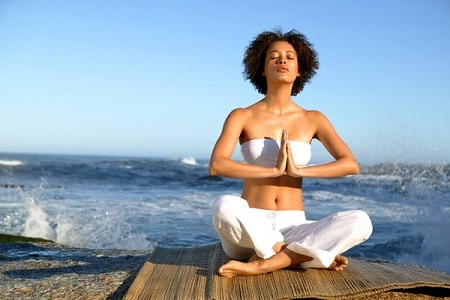
Meditation for Menopause
Meditation is a time-honored technique that can take you into infinite dimensions of consciousness. One major principle to meditation is in the ability to completely quiet your mind. Quieting the mind comes as a result of meditating over a long period of time, but any time you are looking within, you are meditating.
There are many meditation methods. Some are passive and others are active — not in the physical sense, but in the sense that you actually do something during meditation. Meditators learn to focus their awareness and direct it onto an object: the breath, a phrase or word: a mantra, repeated silently, a memorized inspirational phrase, an image in the mind’s eye. Researchers have documented immediate benefits in terms of lowered blood pressure, decreased heart and respiratory rate, increased blood flow, and other measurable signs of the relaxation response.
Meditation will calm an agitated mind, creating optimal physical and mental health, undo our sense of separateness, which is the common root of fear and misery, unify consciousness, putting us in touch with our higher self and connect us to higher consciousness. Meditation restructures the mind, allowing us to achieve our full potential as human beings.
Progressive Relaxation is just that. A slow transition from a tense, immobile state to a calmer more supple mind and body. This is a way of releasing tension in the muscles. There are many variations of Progressive Relaxation. Here is one of them:
Begin by laying on your back in a comfortable position.
Take a series of deep slow breaths and then focus your awareness on different parts of the body in turn, becoming aware of any muscular tension and releasing it. One way to do this is to first tense a muscle deliberately and then relax it.
You can start with the top of the body, tensing and relaxing the muscles of the upper face, then moving on to the jaw, neck, chest, front of the arms, abdomen, thighs, lower legs, feet, and toes.
Then do the same down the back of the body. Finally, lie still with the eyes closed, concentrating on your breath.
Allow the whole body to relax into the ground. Feel the floor underneath you, supporting you. Feel the earth supporting the floor. Feel yourself now deeply rooted and grounded into the earth beneath you.
Enjoy this deep feeling of peace and freedom from muscular tension.
Consider the amazing power of the Deluxe Meditation Kit . Whether for meditation, quiet reflection or for creating a peaceful environment to be yours, the opportunity awaits those ready to explore the world of meditation!

Study Energy Medicine at Home
The Peacefulmind.com Homestudy Courses make it possible for anyone to study energy medicine at home, on your time! These certifications programs are offered by the National Association of Holistic Wellness
*Transitions: The Transformational Guide and Workbook for Creating Great Health This is the culmination of years of Andrew Pacholyk, MS, L.Ac. clinical work. This is a manual you can use, whether you are healthy or ill or somewhere in between and you want to re-balance your mind, body and spirit to become the whole person you can be! This workbook gives you a plan to take care of yourself. It can be used over and over to find balance and keep yourself as healthy as possible. It gives you “tools” to use when and where you need them. It helps to evaluate where you are in your journey and offers ways to get you exactly where you want to be! Want to know more?
*The “Color Elite” Color Therapy Certification Course Andrew Pacholyk, MS, L.Ac. has finally published his most complete healing course using the power of color and light therapy. This ultimate guide to chromotherapy teaches you about color and every aspect of it, how it is used in different therapeutic settings and how it has become such a great healing modality, no matter what profession you are in you will learn how to incorporate color into your daily life! Want to know more?
*The Crystal Light Crystal Therapy Course This incredible course is our biggest and most popular course on the internet! This is the study of crystals and how to heal with earth’s precious gems! Want to know more?
*Chakracology – A Workbook and Manual This workbook format allows you to look at the energy of the Chakra and how they affect us on a daily basis. The book allows you to work through each center on a mental, spiritual, as well as a physical level and then find ways to re-align, balance and manage your energy in a positive way! Want to know more?
*The Healing Art of Touch – Massage Therapy Homestudy Learn the art of touch and massage therapy through Andrew’s very extensive course. Complete anatomy lessons, varied techniques and amazing information is offered in this course. Also learn the business aspects of massage, how to cope with clients that are difficult and energy transference are just a few of the many topics covered! Want to know more?
*What’s Your Heart Telling You? Finding Love and Romance – The Workbook and Journal Andrew Pacholyk, MS, L.Ac. has now published his newest work based on years of personal intimacy, clinical experience, counseling and client research on the ways to navigate love, sex, romance and relationships in a modern day world. Andrew has devised this very thorough workbook and journal with questionnaires, exercises, quotes, tips, meditations, feng shui, aromatherapy, massage and herbal applications for creating the perfect scenario for finding, coping and keeping love in your life! Want to know more?
*The Feng Shui Journal The Peacefulmind.com Feng Shui Journal makes it possible for you to improve relationships, maximize career potential and enhance your environment! * We are honored to offer the Feng Shui Journal for beginner to advanced Feng Shui practitioners. This journal covers an extensive background on Feng Shui techniques history, usage, clearing, cleansing, manifesting and helpful information in order to bring balance back into your life! Want to know more?
What are your experiences with acne?
Sharing your own experiences often helps others. We’d love to know in the Peacefulmind Community.
References
1. The Women’s Health Initiative (WHI)
2. National Institutes of Health
3. The European Heart Journal
4. The New England Journal of Medicine
5. The Brigham Multipurpose Arthritis and Muskuloskeletal Disease of Boston
6. The North American Menopause Society
7. American College of Obstetricians and Gynecologists
8 American Association for Laboratory Accreditation
9. A Modern Herbal www.botanical.com
2. Balch, James F. M.D., Balch, Phyllis A., C.N.C., Prescription for Nutritional Healing, 1990
3.Barolet, Randall Bensky, Dan, Chinese Herbal Medicine: Formulas and Strategies; ed.; Eastland Press, Seattle, c1990.
4.Birren F. (1967) Color Psychology and Color Therapy. New Hyde park, N.Y., University Books
5.Boericke, William M.D., Materia Medica with Repertory, 1927, Boericke & Runyon
6. Chevallier, Andrew, The Encyclopedia of Medicinal Plants, 1996, Dorlilng Kindersley Limited
7.Balch M.D., J. and Balch C.N.C, P. Prescription for Nutritional Healing, 2nd Ed. New York, U.S.A: Avery Publishing Group, 1997.
8. Dewey, W.A. Practical Homeopathic Therapeutics. New Delhi, India: Jain Publising Co
9. Gibson DM. First Aid Homeopathy. The British Homeopathic Association. London, England
10. Duke, J.A. Handbook of Medicinal Herbs. Boca Raton, FL: CRC Press, 1985
11. Duke, James A. Dr., The Green Pharmacy
12. Habif TP, et al. (2001). Acne. In Skin Disease: Diagnosis and Treatment, pp. 72-83. St. Louis: Mosby
13. Hahnemann, Samuel. Organon of the Medical Art. 6th ed. Edited and annotated by Wenda B. O’Reilly. Redmond, Washington, 1996.
14. Health Library, The: http://healthlibrary.com/reading/ncure
15. Kaptchuk, Ted; The Web That Has No Weaver; Congdon and Weed, Inc., New York, c1983.
16. Lawless, Julia. “The Illustrated Encyclopedia of Essential Oils”. Rockport, MA: Element Books, Inc., 1995.
17. Merck Manual, Home Edition, 2000
18. Mills, Simon Y., The Dictionary of Modern Herbalism
19. Mindell, Earl, Earl Mindell’s Herb Bible
20. Mother Nature’s Herbal Encyclopedia www.mothernature.com
21. Murray and Pizzano, Encyclopedia of Natural Medicine
22. Myss, Caroline Ph.D. Anatomy of the Spirit, Three Rivers Press (August 26, 1997)
23. National Center for Complementary and Alternative Medicine (NCCAM): A division of the U.S. Department of Health & Human Services dedicated to research.
24. Shealy, Norman C., The Illustrated Encyclopedia of Natural Remedies
25. TCM: tcm.health-info.org/
26. The Pharmacological Basis of Therapeutics, 9th ed., New York: McGraw-Hill, 1996
27. Tierra, Michael, Planetary Herbology
28. Tierra, Michael, Lust, John, The Natural Remedy Bible
29. World Health Organization (WHO), http://www.who.int/en

